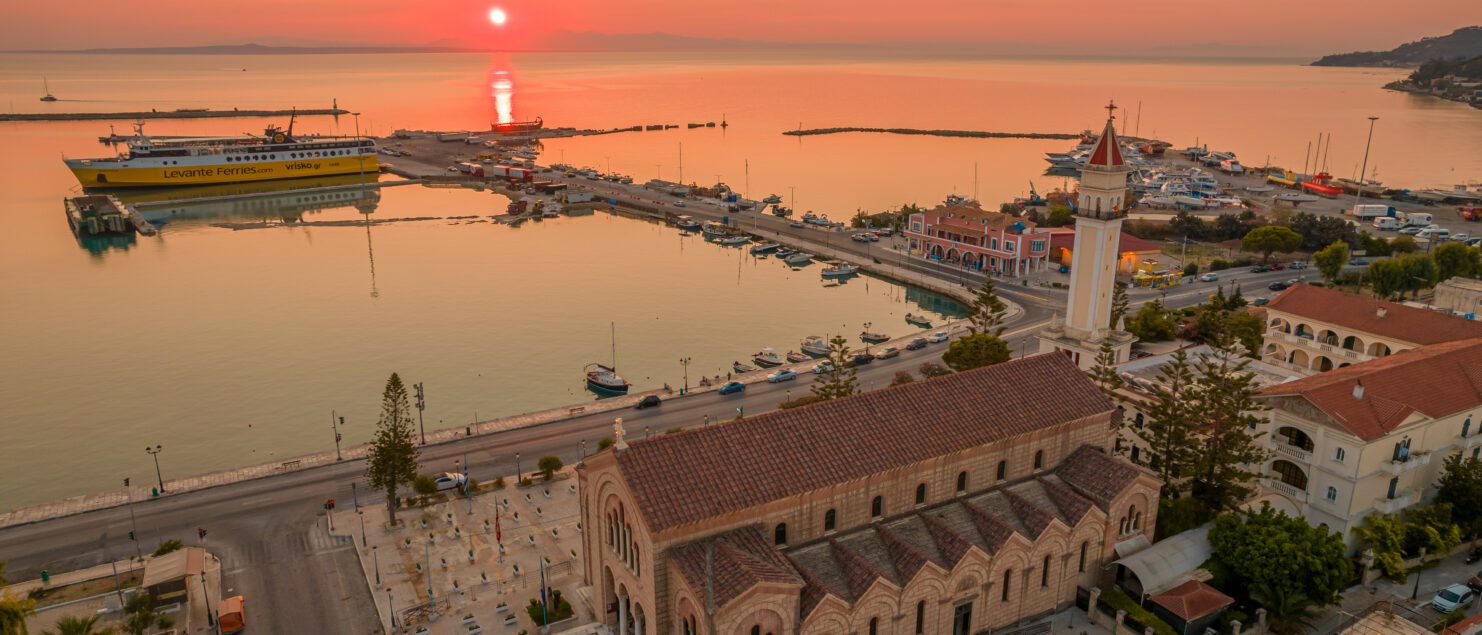Zakynthos celebrates its Patron Saint
St. Dionysios, who is the patron saint of Zakynthos, was born in Zakynthos in 1547. In 1568, at the age of 21, following the death of his parents, he decided to enter the priesthood and to assume a life of monasticism. At this time he was given the name of Daniel.
He spent the next few years travelling between Zakynthos and Strofades (two small islands south of Zakynthos), as he served at the two monasteries. The monastery at Anafonitria was built in the 15th century and was home to St Dionysios for many years, especially towards the end of his life. Relics and artifacts belonging to the saint can still be seen at the monastery along with original frescoes from the 15th century which were discovered during a recent renovation. The monastery in Strofades was built in the 12th century and used to house over a hundred monks, now it is inhabited by one monk. The monastery still contains many artifacts dating back many centuries. The islands are part of the National Marine Park as they are a resting place for many migratory birds and also have rich, fertile soil with many rare plants.
St Dionysios gained much respect from the clergy and people in both places, and in 1577 he was ordained Archbishop of Aegina-Poros. His name was changed to Dionysios in honor of St. DionysiosAeropagitis. With the ordinations that were bestowed upon St Dionysios, it seemed that a special gift was also bestowed upon him. The many blessings, which he granted to his people seemed to produce miracles and caused his popularity to grow even more. He served as the Archbishop of Aegina for one year before feeling the need to return to Zakynthos. On returning to Zakynthos he was elected as Bishop of Zakynthos and President of Zakynthos and he became the official priest of the church of St. Nicholas on the Mole inSolomos Square.
Among the many blessings and miracles for which St Dionysios will be remembered is his unbelievable act of forgiveness. In December 1580, St Dionysios’ brother, Konstantinos, was murdered by a man, who in trying to flee from the authorities, found refuge at the monastery where St Dionysios served as abbot. While at the monastery, the murderer confessed the sin to St Dionysios, who not only forgave him of the crime, but hid him from the soldiers and helped him escape across the sea to the shores of Kefalonia.
In the spring of 1622 he was faced with serious health problems and on the 17th December 1622 he passed away. At his request he was buried at the Monastery in Strofades. Several years later, when his body was removed from its grave, his remains were not only found to be intact, but his body emitted a mixed fragrance of flowers and frankincense. In 1703, the Orthodox Church in Constantinople declared him a Saint and the protectorate of Zakynthos. In 1717, on 24th of August, his remains where brought to Zakynthos and in 1764 they were permanently moved to the church of St. Dionysios in Zakynthos Town which bears his name. The memory of St. Dionysios is celebrated on the 17th of December, the day of his death, and on the 24th of August the day he returned to Zakynthos. On his celebrations days he is placed upright in a glass casket and there is a procession through the streets of Zakynthos Town, anyone wishing to be healed from illness will lie down in the road as the casket is passed over the top of them. Many believers also pay homage to the saint by visiting in the church during the 3-day celebrations and kissing his slippers.
St Dionysios’ body now resides intact in a mummified form in a locked, viewable tomb at the Church of St Dionysios. Sometimes, his tomb is unable to be opened. Many believe that this happens when St Dionysios is out walking to perform a needed miracle. This is because often when the tomb is unlocked and opened, seaweed is found on his feet and his slippers are worn thin. In fact, his slippers need continual replacement because they receive so much wear and these are made by the local women of the island.







